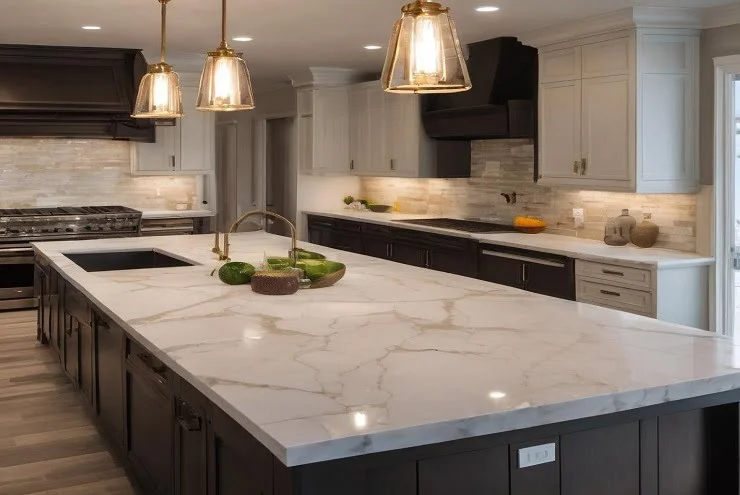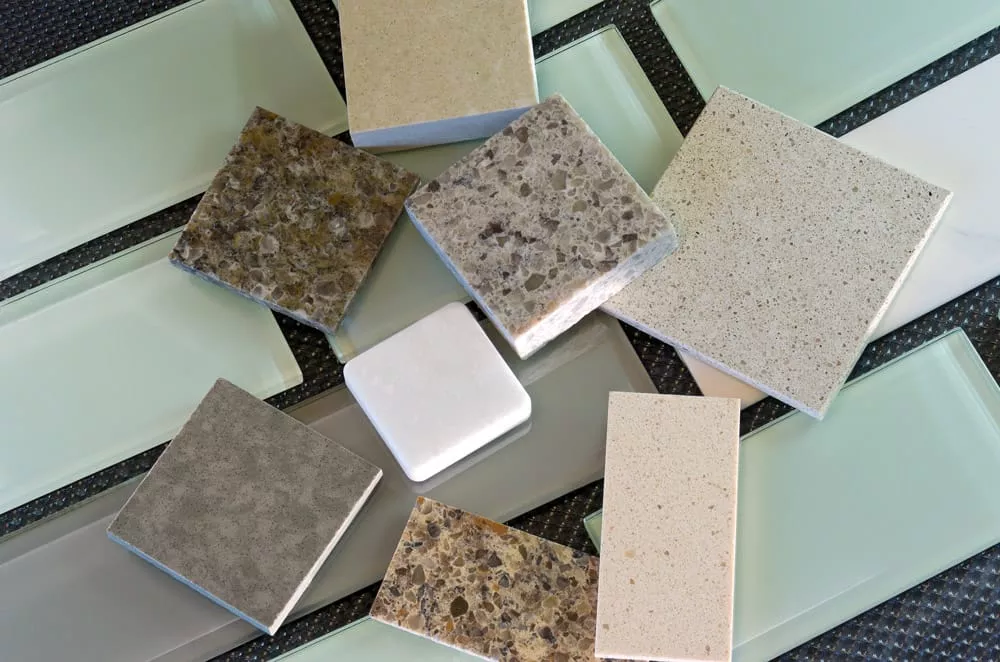Quartz countertops are the epitome of elegance and functionality, seamlessly blending luxury with practicality. When planning your dream kitchen or bathroom, one question inevitably arises: 2cm vs 3cm quartz—which thickness is best?
This decision goes beyond mere appearance. From creating visual impact to ensuring durability, understanding the nuances of quartz countertop thickness can elevate your design and tailor your space to perfection. Let’s explore these two options in detail.
The Aesthetic Appeal: 2cm vs 3cm Quartz
2cm Quartz: Sleek Sophistication
- Visual Impact: The 2cm thickness lends itself to modern and minimalist designs, offering a sleek and refined appearance.
- Edge Profiles: Often laminated to achieve a thicker look, it creates versatility in edge design.
- Best Fit For: Urban kitchens, modern bathrooms, or spaces with a contemporary flair.
Design Tip: Pair 2cm quartz with light, reflective finishes for an ethereal, airy effect.
3cm Quartz: Bold and Luxurious
- Visual Impact: The 3cm thickness commands attention, exuding luxury and solidity.
- Edge Profiles: With no need for lamination, the natural thickness enhances clean, bold lines.
- Best Fit For: Traditional kitchens, expansive islands, or statement-making countertops.
Design Tip: Darker quartz tones in 3cm thickness add drama and richness to your interiors.
Practicality Meets Style: Which Works Best for You?
Durability
- 2cm Quartz: Durable enough for standard applications but requires additional support for large overhangs.
- 3cm Quartz: Sturdier and more resistant to chipping, making it ideal for high-traffic areas.
Friendly Advice: If your countertops see heavy use—think bustling family kitchens or rental properties—3cm quartz offers peace of mind.
Cost Considerations
Luxury doesn’t have to mean breaking the bank. The cost difference between 2cm and 3cm quartz primarily reflects material usage and installation.
- 2cm Quartz: Typically less expensive but may require additional expenses for edge lamination or structural supports.
- 3cm Quartz: Higher upfront cost but fewer hidden extras, as no lamination is needed.
Budget Tip: Prioritize where thickness matters most—choose 3cm for islands and high-use areas, and 2cm for vanities or decorative accents.

Luxury in Detail: Finishing Touches
Both 2cm and 3cm quartz offer unmatched elegance, but how they’re finished can enhance their beauty even further:
- Polished Finishes: Amplify quartz’s natural patterns and create a high-shine effect.
- Matte Finishes: Offer a soft, velvety feel that’s perfect for subtle sophistication.
- Textured Finishes: Add a tactile dimension for unique, statement-making surfaces.
Friendly Tip: Complement quartz with elegant hardware—think brushed gold or matte black—to tie the design together.
Eco-Friendly Choices with Quartz
Both thicknesses offer sustainable luxury, as quartz is made with eco-conscious processes:
- 2cm Quartz: Uses less material, making it a resource-efficient choice.
- 3cm Quartz: Durable enough to reduce the need for frequent replacements, enhancing its long-term sustainability.
Final Thought: Luxury can be responsible—choosing quartz supports lasting beauty with minimal environmental impact.
Conclusion: A Tailored Choice for Every Space
Whether you’re drawn to the sleek elegance of 2cm quartz or the bold statement of 3cm quartz, both options bring unparalleled luxury and functionality to your home. Your choice will depend on your style preferences, functional needs, and how you envision your space.
So go ahead, explore the quartz countertop thickness debate with confidence, and transform your home into a haven of style and practicality.






